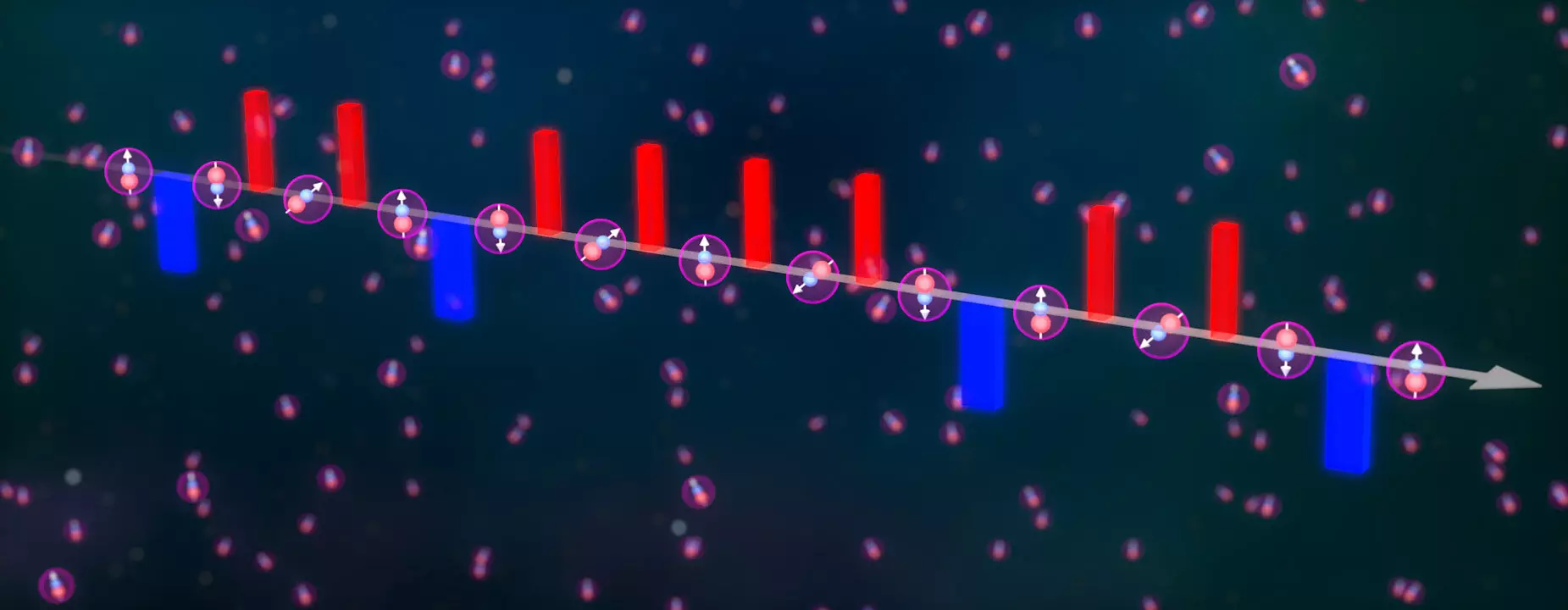The intricate dance of quantum spins unveils a multitude of fascinating phenomena within our universe, such as superconductivity and magnetism. However, effectively replicating and controlling these quantum interactions within laboratory settings has been a significant challenge for physicists. A recent study published in *Nature* by researchers from JILA, NIST, and Harvard University illuminates new pathways to explore these elusive dynamics. By employing a technique known as Floquet engineering, these scientists have manipulated the interactions between ultracold potassium-rubidium molecules, which paves the way for deeper investigations into the fundamental behavior of quantum systems.
At the heart of their work, researchers leveraged periodic microwave pulses to fine-tune the interactions among polar potassium-rubidium molecules. This novel approach mirrors the functionality of a “quantum strobe light,” enabling scientists to elicit diverse quantum phenomena by adjusting the parameters of microwave emissions. The versatility of Floquet engineering allows for an intricate orchestration of quantum states, revealing potential pathways for the creation of entangled states that hold promise for next-generation quantum sensing technologies. As JILA graduate student and primary author Calder Miller pointed out, the rich energy structure of polar molecules offers a fertile ground for probing new physics, particularly when researchers can manipulate interactions with precision.
One noteworthy aspect of this research is the innovative integration of a Field Programmable Gate Array (FPGA)-based arbitrary waveform generator. This technology significantly enhances the experimental framework by enabling the application of thousands of microwave pulses, overcoming previous limitations encountered in prior setups. The success of this approach lies in its ability to remove single-particle noise and custom-tailor the interactions between the molecules. As one of the contributing graduate students, Annette Carroll, reflects, the evolution from a limited pulse sequence to a more sophisticated manipulation strategy marks a crucial leap forward in quantum engineering.
Before delving into Floquet engineering, the team laid critical groundwork by encoding quantum information within the lowest rotational states of the molecules. This initial manipulation was a deliberate step, as it set the stage for exploring the XXZ and XYZ spin models—central frameworks for interpreting particle interactions within magnetic materials. By visualizing the spins as dancers, their interaction styles reflect spin polarization changes, offering a conceptual tool that makes the complex mathematics more accessible. Such visual analogies help contextualize how subtle alterations in interaction dynamics can lead to profound consequences in quantum behavior.
A groundbreaking aspect of this research is the confirmed observation of two-axis twisting dynamics within their system. This phenomenon involves manipulating quantum spins along dual axes, facilitating the creation of highly entangled states. The significance of this discovery lies not only in theoretical implications but also in practical applications in quantum sensing and measurement precision. By generating spin-squeezed states that compress quantum uncertainty in one spatial dimension while amplifying it in another, the potential for improved sensitivity in spectroscopy is tangible.
The excitement surrounding their findings was palpable within the team. Calder Miller described the moment as thrilling—initial signs of two-axis twisting hinted at successfully realizing a long-hypothesized concept that had eluded experimental verification for decades. The emergence of this behavior not only leads to a deeper understanding of quantum dynamics but also highlights the potential for innovative methodologies in quantum experimentation.
Looking forward, the researchers at JILA and their collaborators are poised to advance their understanding of quantum entanglement further. While the primary focus of their recent work was on observing two-axis twisting, the logical next step involves refining detection capabilities to verify the generation of entangled states definitively. This pursuit reflects a broader ambition within the field to harness entangled states for applications ranging from robust quantum computing to ultra-sensitive measurement techniques.
The journey through the intricacies of quantum spins is fraught with challenges, yet the advancements brought forth by this collaboration underscores the exciting progress being made. As researchers continue to innovate and explore the possibilities inherent in quantum mechanics, the potential for breakthroughs in our understanding of the universe’s fabric remains incredibly promising.


Leave a Reply